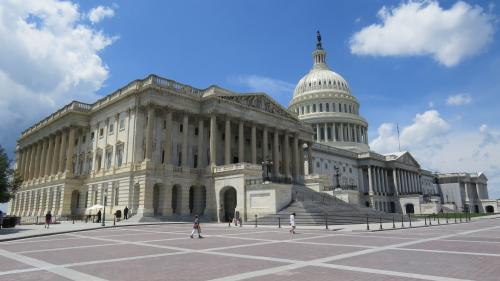Household spending has held up remarkably well despite tighter monetary policy, a weak stock market, and the waning of stimulus from federal transfers during the pandemic. At the same time, 35 states and the District of Columbia enacted significant tax cuts in calendar year 2022, leading to speculation that state fiscal policy is contributing significantly to household spending. This speculation seems misguided.
Of course, state tax cuts do give households more money to spend. But the state tax cuts have been too small to make much difference on the macro-economy. According to the National Association of State Budget Officers, states enacted tax cuts totaling $6 billion in fiscal year 2022 (July 1 through June 30, 2022 for most states), and $16 billion in FY2023 (which includes the $9.2 billion California Middle Class Refund), for a total of $22 billion over two years. That represents just 0.1 percent of annual personal income, which totaled $21.8 trillion in 2022. In comparison, the 2020 and 2021 federal Economic Impact Payments—the stimulus checks—totaled $800 billion, about 36 times larger than the state tax cuts.
More broadly, state and local revenues from personal income taxes, sales taxes, and property taxes have been robust over the past two years, measured as a share of personal income (figure). To be sure, strong tax collections reflect the underlying strong economy—including robust job growth, strong consumption growth, and a rise in the value of equities and housing. Still, the pattern of collections doesn’t suggest a large amount of stimulus from state and local taxes.
States might have boosted other transfers to households—like increasing rental assistance or Temporary Assistance to Needy Families (TANF). But data on expenditures from NASBO show these increases are likewise extremely small: total state general assistance funding increased by $5 billion between FY2020 and FY2021 and an additional $2.5 billion from FY2021 to FY2022. States don’t report large expansions in FY2023 either.
In sum, when looking for the explanation for strong consumer demand, don’t look to the state and local government sector.
The Brookings Institution is financed through the support of a diverse array of foundations, corporations, governments, individuals, as well as an endowment. A list of donors can be found in our annual reports published online here. The findings, interpretations, and conclusions in this report are solely those of its author(s) and are not influenced by any donation.








Commentary
Are state tax cuts boosting household spending?
March 27, 2023